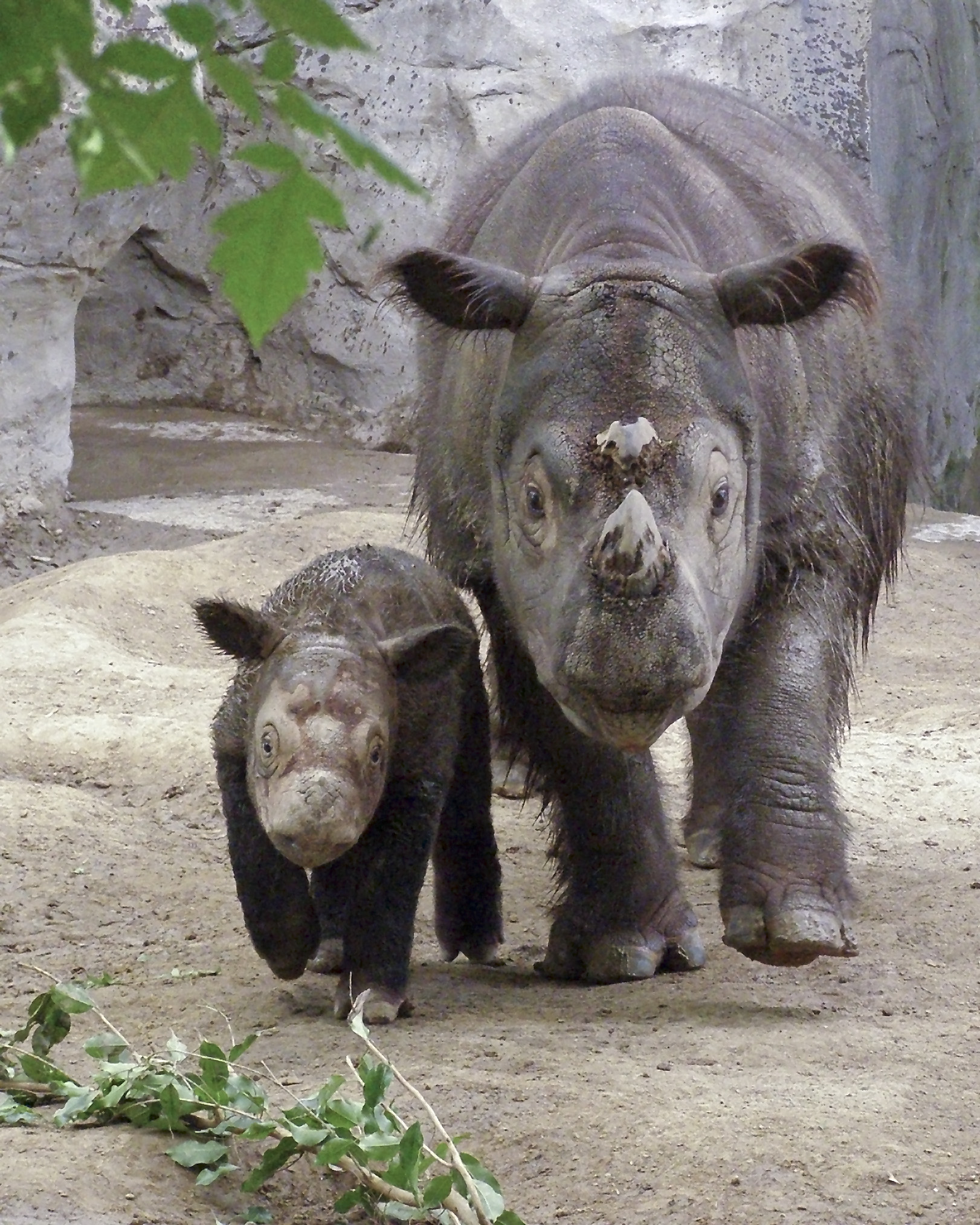The world's smallest rhinoceros, the Bornean Rhino, a breed of Sumatran Rhino, is dangerously close to total extinction in the wild. IUCN has categorized it as being critically endangered. Approximately 40 individuals remain, leading many to predict that current conservation methods are not aggressive enough to save the species. Malaysian officials are planning a new course of action, constructing a trap for a solitary female with the hopes to breed her with a previously rescued male. Researchers have been watching the female for several years and, without viewing a pregnancy, fear she may not be getting enough natural interaction with other rhinos to produce offspring. The trap, a concealed hole in the female's territory, has been constructed. Now it is just a matter of time, waiting for the female to become trapped and introduced to what will hopefully become her new mate.
As previously mentioned, the Bornean Rhinoceros is the world's smallest rhino, reaching only four to five feet tall at the shoulder. It has recently been proposed that it may be a relative of the Woolly Mammoth. Rhinos are herbivores, gnawing on tree saplings and enjoying salt licks. Sumatran Rhinos are the most vocal of the rhinoceros species. Like all rhinos, they have poor vision and enjoy wallowing in mud. Wallowing has proven to be incredibly important to the rhinoceros, as deprivation of mud pools in captivity has lead to many deaths.
Poaching is a major problem for all rhinoceroses, with Sumatran Rhino horns fetching up to $30,000 per kilogram on the black market. According to traditional medicine, their horns can help protect against poison and their meat can be used to cure leprosy and tuberculosis. Aside from poaching, logging of the rhino's habitat is also a substantial threat. The types of wood that rhinos typically live amongst tend to be particularly expensive. Also, because of the small number of surviving animals, breeding is becoming more rare, as rhinos do not often come into contact with each other.
Conservation is often difficult, as Sumatran Rhinoceroses do not tend to thrive in captivity. Most notably, from 1984 to 1996, 40 Sumatran Rhinos were transplanted into zoos and reserves in an attempt to breed them and preserve the species. By 1997, more than half of the captured rhinos had died. In 2004, all but eight died from a surra outbreak. In all of this time, no calves had been born at all and the project was fully deemed a failure. More research is needed to determine how the population can best be helped, although another large-scale capture-and-breed initiative seems unlikely.
via The Monga Bay



babies are gorgeous !!
ReplyDelete